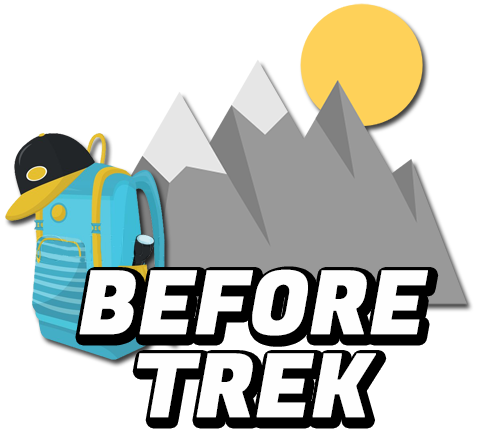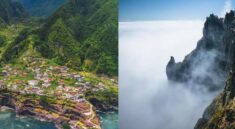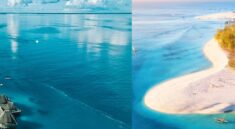Glass Beach in California is a unique coastal destination known for its shimmering shores adorned with colorful sea glass. Located in Fort Bragg, remnants of discarded glass bottles have transformed into smooth, polished gems over time. Visitors can enjoy the distinctive beauty of this beach, where the sun-kissed glass fragments create a mesmerizing mosaic along the coastline, offering a one-of-a-kind seaside experience.
How to get here?
To get to Glass Beach in Fort Bragg, California, you can follow these general directions:
By Car:
- From San Francisco:
- Take U.S. Highway 101 North.
- Merge onto California Highway 20 West toward Fort Bragg.
- Continue on Highway 20 West until you reach Fort Bragg.
- From Sacramento:
- Take Interstate 5 North.
- Merge onto California Highway 20 West toward Fort Bragg.
- Continue on Highway 20 West until you reach Fort Bragg.
- From Eureka:
- Take U.S. Highway 101 South.
- Exit onto California Highway 1 South toward Fort Bragg.
- Continue on Highway 1 South until you reach Fort Bragg.
By Air:
- Nearest Airport:
- The nearest major airport to Fort Bragg is Charles M. Schulz-Sonoma County Airport (STS) in Santa Rosa.
- From the airport, you can rent a car and drive to Fort Bragg, following the directions mentioned above.
Local Transportation:
- From Fort Bragg:
- Once you are in Fort Bragg, Glass Beach is located on the coastline.
- Head to the Glass Beach parking area, and from there, you can access the beach.
Important Tips:
- Check for any road closures or construction before your trip, as road conditions may vary.
- Fort Bragg is a small coastal town, and Glass Beach is a well-known attraction, so you can use local maps or GPS to navigate.
- Consider renting a car for flexibility in exploring the beautiful coastal areas surrounding Fort Bragg.
Things not to forget
When visiting Glass Beach in Fort Bragg, California, there are a few things you should not forget to enhance your experience. Here’s a list of items and considerations:
- Appropriate Footwear:
- Wear comfortable shoes suitable for walking on the rocky beach. Flip-flops may not provide enough support for exploring the glass-covered shoreline.
- Sun Protection:
- Bring sunscreen with a high SPF to protect yourself from the sun’s rays. Sunglasses and a hat can also provide additional protection.
- Reusable Water Bottle:
- Stay hydrated during your visit by bringing a reusable water bottle. Exploring the beach can be thirsty work, especially on sunny days.
- Camera or Smartphone:
- Capture the beauty of Glass Beach by bringing a camera or smartphone for photos. The colorful sea glass and scenic coastal views are worth documenting.
- Binoculars:
- If you’re interested in birdwatching or observing marine life, consider bringing binoculars for a closer look.
- Comfortable Clothing:
- Dress in layers and wear comfortable clothing suitable for the coastal climate. The weather can change, so it’s wise to be prepared.
- Snacks:
- Pack some snacks for energy during your visit. While Fort Bragg has dining options, having a few snacks on hand can be convenient.
- Trash Bag:
- Follow the principles of Leave No Trace by bringing a small trash bag to collect any waste you may generate during your visit. Keep the beach clean and pristine.
- Local Guide or Map:
- Consider bringing a local guidebook or map to learn more about the area and discover other attractions in Fort Bragg and the Mendocino Coast.
- Beach Blanket or Towel:
- If you plan to relax on the beach and enjoy the scenery, a beach blanket or towel can provide comfort.
- Comfortable Backpack:
- Use a comfortable backpack to carry your essentials, such as water, snacks, sunscreen, and your camera.
- Weather Check:
- Check the weather forecast before your visit and dress accordingly. Fort Bragg can experience cool coastal temperatures, even in the summer.
Remember to be respectful of the environment and follow any posted guidelines to preserve the beauty of Glass Beach. Additionally, check for any local regulations or restrictions in place during your visit.
Best time to visit
The best time to visit Glass Beach in Fort Bragg, California, depends on your preferences and the type of experience you seek. Here are some considerations for different times of the year:
- Late Spring to Early Fall (May to September):
- This period generally offers milder temperatures, making it more comfortable for exploring the beach.
- Late spring and summer months bring longer daylight hours, providing more time for outdoor activities.
- These months are popular for beach visits and coastal exploration, but they may also attract more tourists.
- Fall (October to November):
- Fall is a pleasant time to visit Glass Beach, with cooler temperatures and potentially fewer crowds compared to the summer months.
- The autumn foliage in the surrounding areas can add to the scenic beauty of the region.
- Winter (December to February):
- Winter months are cooler, and the weather can be unpredictable with occasional rain. However, winter storms can create unique and dramatic seascapes.
- The off-season may result in fewer visitors, offering a more tranquil experience.
- Spring (March to April):
- Spring brings blooming wildflowers and rejuvenated landscapes. The weather starts to warm up, making it a comfortable time for outdoor activities.
- Spring is often considered a shoulder season, meaning fewer crowds compared to the peak summer months.
Important Tips:
- Tide Timing: Check tide schedules before your visit, as the appearance and accessibility of sea glass on Glass Beach can be influenced by tides.
- Sunset: Consider visiting during the late afternoon to catch a beautiful sunset over the Pacific Ocean.
- Off-Peak Times: To avoid crowds, consider visiting on weekdays or during the shoulder seasons.
Is beach glass expensive?
The value of beach glass, also known as sea glass, can vary widely based on several factors. Generally, beach glass is not considered a highly valuable material, but certain factors can influence its worth. Here are some considerations that can impact the value of beach glass:
- Color and Rarity:
- Uncommon colors and rare pieces of beach glass can be more valuable. For example, finding a piece of red or orange sea glass is considered rare and may be more sought after by collectors.
- Size and Shape:
- Larger and well-shaped pieces of sea glass are often more desirable. Collectors may appreciate pieces that are well-worn and exhibit smooth, rounded edges.
- Quality and Frosted Surface:
- High-quality beach glass typically has a frosted appearance, resulting from the natural abrasion process caused by waves and sand. Pieces with a well-frosted surface are often more prized.
- Historical Significance:
- Some collectors may value beach glass with historical significance, such as glass pieces from vintage bottles, ceramics, or glassware that are no longer in production.
- Condition and Flaws:
- Flawless pieces of beach glass without chips, cracks, or significant flaws are generally more valuable. Collectors may prefer pieces in excellent condition.
- Location and Rarity of Find:
- Beach glass from specific locations or regions may have unique characteristics, and collectors may seek pieces from particular beaches known for their sea glass.
- Market Demand:
- The demand for sea glass among collectors can influence its market value. Some people may be willing to pay more for rare or unique pieces.
While beach glass is often treasured for its aesthetic appeal and the story of its oceanic journey, it is not typically considered a high-value collectible like gemstones or precious metals.
What is the story behind Glass Beach?
The story behind Glass Beach in Fort Bragg, California, is both fascinating and a testament to the transformative power of nature over time. The origins of Glass Beach can be traced back to a period when coastal areas were used as dumping grounds for various types of waste, including glass, appliances, and vehicles. Fort Bragg residents disposed of their garbage directly into the ocean, creating what is now known as Glass Beach.
Here’s a timeline of the historical events that led to the creation of Glass Beach:
- Early to Mid-20th Century:
- From the early to mid-20th century, the coastline near Fort Bragg was used as a landfill. Residents and businesses discarded household items, glass bottles, and other waste directly into the ocean.
- 1970s:
- Recognizing the environmental impact of ocean dumping, the North Coast Water Quality Control Board and the city of Fort Bragg implemented programs to clean up the coastline and regulate waste disposal.
- Cleanup Efforts:
- Cleanup efforts were initiated to remove larger debris from the area, but many small glass and metal fragments remained on the beach.
- Natural Processes:
- Over the years, natural processes, including wave action and weathering, began to smooth and polish the glass fragments. The glass pieces underwent a process of abrasion, resulting in the creation of colorful, frosted sea glass.
- Transformation into Glass Beach:
- The relentless pounding of the waves, combined with the movement of sand and rocks, transformed the coastline into what is now known as Glass Beach. The glass pieces, once discarded as waste, became a unique and mesmerizing feature of the beach.
Image credit: miro.medium.com, pbs.twimg.com





